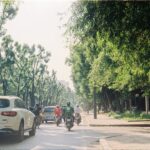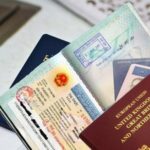Welcome back to VNAround (vnaround.com) – more than a blog, we’re your Viet guide to making your first trip to Vietnam smooth, exciting, and unforgettable. If you’re traveling to Vietnam for the first time, you might have a lot of questions: When should you go? How should you get around? What should you pack? Don’t worry—we’ve got you covered with this step-by-step guide to planning your perfect Vietnam adventure.
1. Decide When to Visit Vietnam
Vietnam has three distinct regions with different climates, so the best time to visit depends on where you’re going:
- North (Hanoi, Sapa, Ha Long Bay): Best from October to April, when the weather is cooler and drier.
- Central (Da Nang, Hoi An, Hue, Nha Trang): Best from February to August, with lots of sunshine and little rain.
- South (Ho Chi Minh City, Mekong Delta, Phu Quoc): Warm all year round, with the dry season from December to April being the most comfortable.
For first-time travelers, visiting between November and April is ideal, as you’ll avoid the peak heat and heavy rains.
2. Choose Your Must-Visit Destinations
Vietnam is a long and diverse country, so consider your travel style when choosing your itinerary.
Classic First-Timer Itinerary (10–14 Days):
- Hanoi – Explore the Old Quarter, visit Hoan Kiem Lake, and enjoy street food.
- Ha Long Bay – Cruise through breathtaking limestone karsts.
- Hue & Hoi An – Discover imperial history and walk through lantern-lit streets.
- Da Nang – Relax on stunning beaches or visit Ba Na Hills.
- Ho Chi Minh City – Experience Vietnam’s bustling economic hub.
- Mekong Delta – Take a boat trip through floating markets.
If you have less than 10 days, focus on either the North (Hanoi + Ha Long Bay + Sapa) or the South (Ho Chi Minh City + Mekong Delta + Phu Quoc).
3. Get Your Vietnam Visa Ready
Many travelers need a visa to enter Vietnam, but Vietnam offers e-visas for over 80 nationalities, making the process simple.
How to Get Your Vietnam Visa:
- Apply for an e-Visa online at Vietnam’s official government website (processing takes 3-5 days).
- Visa-on-arrival is available for some nationalities but requires a pre-approval letter.
Make sure your passport is valid for at least six months from your travel date.
4. Book Your Flights and Accommodation
Flights
The two main international airports are:
- Noi Bai International Airport (Hanoi) – Northern Vietnam
- Tan Son Nhat International Airport (Ho Chi Minh City) – Southern Vietnam
If you’re flying in and out of different cities, book open-jaw flights (e.g., arriving in Hanoi and departing from Ho Chi Minh City) to save time and money.
Accommodation
- Budget Travelers: Hostels and guesthouses ($5–$20 per night).
- Mid-Range: Boutique hotels and resorts ($30–$80 per night).
- Luxury: Five-star resorts and villas ($100+ per night).
For a unique experience, try a homestay in Sapa or the Mekong Delta.
5. Plan How to Get Around Vietnam
Domestic Flights: Best for long distances (e.g., Hanoi to Ho Chi Minh City).
Trains: A scenic but slower option—ideal for traveling from Hanoi to Hue or Da Nang.
Buses: Affordable and convenient for mid-range distances.
Ride-Hailing Apps: Grab is widely available in cities for taxis and motorbikes.
Motorbike Rental: Perfect for short-distance trips in places like Da Nang or Phu Quoc.
6. Learn Basic Vietnamese Phrases
While English is spoken in tourist areas, knowing some Vietnamese phrases can enhance your travel experience:
- Xin chào (Hello)
- Cảm ơn (Thank you)
- Bao nhiêu tiền? (How much is this?)
- Tôi không ăn thịt (I don’t eat meat – useful for vegetarians)
7. Pack Smart for Your Vietnam Trip
Essentials to Pack:
- Lightweight, breathable clothing (Vietnam is humid!).
- A rain jacket if visiting during the rainy season.
- Sunscreen and insect repellent.
- Power adapter (Vietnam uses Type A, C, and F plugs).
- Comfortable walking shoes for exploring cities and nature trails.
8. Be Aware of Local Customs and Etiquette
Respect Local Culture:
- Dress modestly when visiting temples or pagodas.
- Take off your shoes before entering someone’s home.
- Avoid touching people’s heads (it’s considered sacred in Vietnamese culture).
Bargaining Tips:
- Bargaining is expected in markets, but always do it politely.
- Restaurants and stores with set prices usually don’t allow bargaining.
Vietnam is one of the most exciting and rewarding countries for first-time travelers. From breathtaking landscapes to rich culture and amazing food, every moment will be an adventure. At VNAround (vnaround.com), we’re here to help you navigate your Vietnam journey with ease. Whether you’re exploring bustling cities, relaxing on tropical beaches, or diving into local cuisine, Vietnam is waiting for you! 🌏 Stay tuned to VNAround for more travel tips and guides to make your trip unforgettable!



